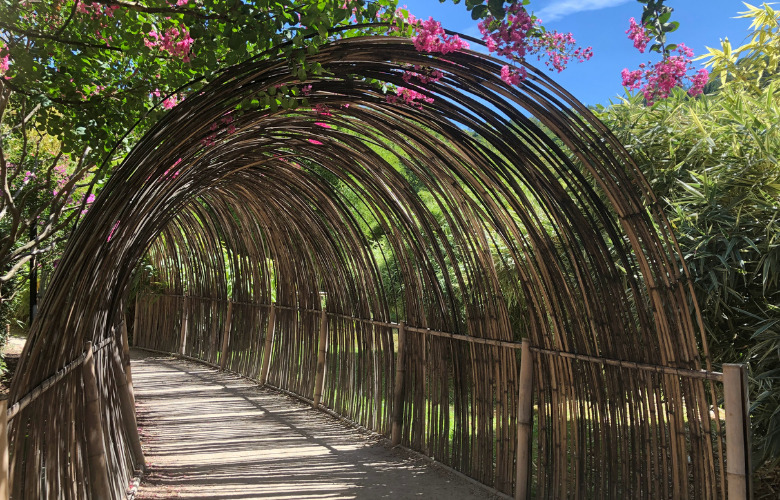
Now that theatre and entertainment events in general have moved back indoors, it is time to think about the positive influences the pandemic has had on our industry. Things we began doing differently due to rather sad reasons might now be new, enchanting, best practices we might – at least in part – want to keep. One of these new best practices is to keep having more theatre performances outdoors.
During the Covid19 pandemic some entertainment companies, big and small, resorted to connecting with their audiences via Zoom productions, livestreams, audio shows, etc.
However, many others went outdoors instead to save themselves from financial disaster or even bankruptcy.
In the UK, even large production companies like the Royal Shakespeare Company ventured outside.
I went to quite a few outdoors theatrical events around France, Germany, and Switzerland during 2020 and 2021. And must say, I thoroughly enjoyed each individual experience.
British Playwright Steve Waters, who wrote an essay about this in 2021, says, “Exterior spaces re-shape storytelling itself.” And continues to give us historical examples.
“The theatre historian David Wiles, in his book A Short History of Western Performance Space, sets out a spectrum of different dramatic spaces.”
“Interior, cave-like venues offer darkness and the removal of other stimuli, impossible in the outdoor realm. Inside shows aspire to control and create illusion; outdoor shows cater for interruption and coincidence.”
“Drama in daylight must work harder to claim our attention. Subtext and subtlety are elusive.”
Conventions have emerged to deal with this, from masks amplifying Greek performers to the heightened rhetorical language that drives Renaissance plays.
In director Peter Brook’s 1968 classic book The Empty Space, the outside is the domain of “rough theatre,” of clowning and defiant horseplay with heckling audiences.
Although some theatre companies remained committed to outside performances, the stage’s significant shift indoors in the 17th century led to as many losses as gains – chief amongst them a reduction in drama’s reach and the long path towards it becoming a luxury good.
As soon as a show hits the streets, capacity expands and theatre serves as a kind of artistic commons, owned by all rather than only a select few.
Indoor theatre, by contrast, is highly policed. When the show migrates into city squares it becomes closer to a demonstration—more ungovernable, more subversive.
During the Covid19 pandemic the reasons for venturing outside were highly practical and rarely politically or philosophically motivated. However, they re-opened certain spheres and options for theatre we had almost forgotten about.
Performances were re-designed to harmonize with and utilize the given outdoor environment.
Steve Waters says about one of his own performances at the time, “While the audience were limited in number and equipped with headsets to pick up the words of actors at a distance, what struck me was the way the performance, with its theme of the extinction crisis intersecting with our renewed desire for open spaces, bled into its environs, with everything in its vicinity becoming charged with meaning.”
“Likewise, interventions from the natural world felt intended: the sardonic gaze of Highland cattle intrigued by the cluster of humans gazing at them, the flight of a raptor mentioned in the text as if cued by supernatural means.”
“In outdoor theatre, the proscenium arch (the classic indoor stage) opens into a much wider aperture and all of life becomes, temporarily, re-enchanted.”
I share this enchantment and personally hope very much that theatre moving outdoors will not just remain a necessity dictated by the pandemic but will rather become an enduring trend.
To again quote the eloquent Steve Waters, “It would be an enormous shame if our buildings rolled back their experiments. Covid has reminded us that safe inside, we participate in only one stage tradition – while outside, beneath the sky, there are other stories to be told.”
Article by Steve Waters in The Theatre Times, 4th Dec 2021
Mexican Theatre in the Wake of the Pandemic
Guilherme Botelho – Dance and the Quest for Meaning


Liam Klenk was born in Central Europe and has since lived on four continents. Liam has always been engaged in creative pursuits, ranging from photography and graphic design, to writing short stories and poetry, to working in theatre and shows. In 2016, Liam published his first book and memoir, 'Paralian'.
Read Full Profile© 2021 TheatreArtLife. All rights reserved.

Thank you so much for reading, but you have now reached your free article limit for this month.
Our contributors are currently writing more articles for you to enjoy.
To keep reading, all you have to do is become a subscriber and then you can read unlimited articles anytime.
Your investment will help us continue to ignite connections across the globe in live entertainment and build this community for industry professionals.